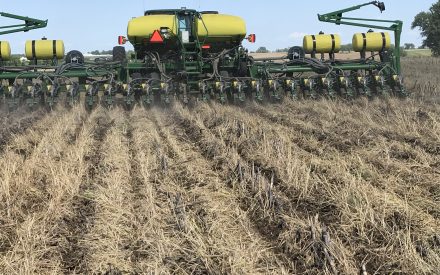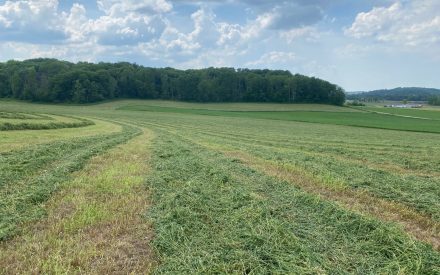Part 2 of 2
Agricultural carbon credits: An overview for farmers and landowners briefly defined some essential terms and introduced key players in carbon markets. This article attempts to break down esoteric concepts such as additionality and permanence that are central to how carbon markets operate. It also highlights some important considerations that farmers and landowners need to keep in mind when deciding whether carbon credits are a good choice for their operation.
At the core of carbon markets are two key concepts: additionality and permanence.
Additionality is the idea that carbon offsets are created for new practices and/or new carbon that is stored. The act of beginning a new practice stores carbon that would otherwise be released. Practices that already exist and have already stored carbon prior to working with an organization do not provide this additionality, so the carbon crediting aggregator cannot issue a carbon credit for that acreage already under that practice. For example, if you are a farmer who has been practicing no-till for 20 years, you could not be paid for the carbon stored in your soils because of that long-established no-till practice. However, if you had not been using cover crops, and you began to use cover crops as a part of a carbon crediting program, you would be able to be paid for those acres with that newly added practice.
In short, carbon offsets = new practice x acreage
If you are a farmer who decides with a carbon credit aggregator to convert 100 acres of land that was previously chisel plowed to no-till, you could be paid for those converted acres.
Permanence is the idea that the carbon stored through carbon offsets will stay out of the atmosphere for a long time. Let’s say you work with a carbon aggregator and convert your 100 acres of historically chisel-plowed fields to no-till and begin storing carbon to create a carbon offset. If the following year you come back and chisel plow that newly no-tilled field, the carbon stored through no-till will be released. This is why carbon credits rely on contracts that farmers sign to ensure that a practice stays in place for 10, 20, or 50 years, or whatever the term length of that contract is. The contract is designed to ensure that the carbon is not released back into the atmosphere during that time, voiding the credit. If permanence was not considered, carbon credits would only purchase a short delay in emissions, quickly undoing the impact of the reduced emissions.
Understanding how long a practice needs to be continued or carbon needs to be stored is essential to know if a carbon credit program is right for an operation. Contracts will vary on their permanence and when payments are made. Some payments may only be made for the first five years, yet per the contract, the practice must be maintained and the carbon must be stored for ten years.
Carbon market payments
Different aggregators will pay in different ways, so reading the contract and fine print in full is important. Payment may be:
- per acre under that practice,
- as a percentage of the profit made from the sale of the carbon credit,
- a flat fee,
- or per ton of carbon sequestered.
Farmers also need to be aware of possible fees that may be deducted from their carbon payments, which might include:
- Brokerage fee: an amount charged by the aggregator for creating the credit.
- Holdback amounts: sounds like what it is, money withheld from the payment of the carbon credit in case of 1) non-compliance, i.e., you plow your no-tilled field or 2) that although the practice is in place, carbon is not actually being stored or is only stored to a lesser degree. Think of this as insurance for the aggregator.
- Verification fee: an amount charged by the entity that is verifying either through soil samples, models, or satellite imagery–and likely all of the above–that the soil is storing carbon and that the farmer is following the practice(s) laid out in the contract.
More considerations for farmers
Stacking/double dipping: Is enrollment in a carbon program limited to one program? With carbon credits, this is clearly yes because of the question of additionality. Two companies cannot sell two carbon credits for the same unit(s) of carbon stored in the soil. The big question is though, what about for non-carbon programs? Carbon farming practices like cover-cropping or no-till store about 1 ton of carbon for every 5-10 acres. The going rate for one carbon credit–or one ton of carbon stored– is $29-$32 in the California carbon market at the time of writing, which would make the average payment $4 per acre before any of the fees mentioned above. Some carbon programs will pay more per acre, while some programs paying for ecosystem services or more standard government programs like EQIP, CRP, CREP, etc. pay considerably more. Can a farmer be paid by a carbon credit program AND the government AND an ecosystem service program for the same practice on the same unit of land? Policies and programs that allow for “benefit stacking” will vary from carbon aggregator to carbon aggregator. Careful consideration of these terms is important when making the decision and evaluating the final contract.
Flexibility: How rigid is the contract? Can practices be switched if the one generating the carbon credit is not working for the farm? This may come down to whether the contract says that the payment is for the practice itself or per ton of carbon stored. If the payment is per ton of carbon stored, there may be the option to switch to a different practice that will store an equal amount of carbon. On the other hand, maybe it turns out later that science shows the chosen practice is not actually storing carbon. Will this practice be grandfathered in, or will this require a switch to a new practice? Is there a penalty fee to be paid for switching practices? Reading the contract and talking with the carbon credit aggregator to ensure that management changes can be made while still being in compliance with the contract is key.
Dispute resolution: In line with contract flexibility, what if there is a dispute between the farmer and the credit aggregator or the verifier; how can the farmer get out of the contract or change it? What about liability if the contract is broken? In the event of a dispute, where will it be resolved? While flying out to California to visit the beach and national parks might be worth the cost of the flight, doing so to settle a dispute over a carbon credit contract may not be. Make sure that any disputes will be settled here in Wisconsin. Also, check the small print to see if disputes would be resolved in the courts or through arbitration.
Compliance markets: Right now the carbon markets in Wisconsin are voluntary: there are no regulations limiting carbon emissions. However, this may not always be the case. If Wisconsin enters into an environment in which farmers are required to regulate carbon emissions, but a farmer has already sold a practice or carbon sequestered on their land to a carbon credit program, what is their standing? Will they be allowed to buy back that credit to be in compliance? Because if someone else is using that credit to be in compliance with carbon emission regulation–remember additionality–the farmer can’t also be.
Legitimacy of the carbon aggregator: If the carbon program company is an established entity, legitimacy may not be an issue. This space, however, is popular with many new companies. Like in the tech world, some technologies, apps, etc. don’t catch on or ever make any money. If the financials don’t materialize for the carbon credit company or for carbon credits in general, will payments still be made for the practices and carbon the farmer stored?
Real estate law: Carbon credits place restrictions on land management. However, many carbon credit contracts are not currently following established–but time-consuming and costly–real estate practices for similar restrictions like easements. This begs the question, if a farmer enters into a carbon credit contract today and goes to sell the land in three years, is the future buyer on the hook for continuing the practice? If you are a future land buyer, how will you know if your land is subject to a carbon credit contract?
So, are carbon credits a right fit for your farm?
The complexity and shifting nature of carbon markets might dull their initial luster for some. There is also a lack of scientific consensus on the amount and permanence of carbon stored through conservation practices to consider. However, for those deeming the landscape worth wading into, there are numerous entities out there waiting to pay for farmers to implement conservation practices. Given all the questions discussed above, consulting with a lawyer is a highly advisable step toward determining if carbon payments are right for your farm. As more companies make commitments to achieve a net zero carbon footprint, they are going to rely increasingly on offsets. Soil carbon holds 25% of the total natural climate solutions, 60% of which relies on rebuilding depleted carbon stocks. With about 37% of total land in the US under agriculture, storing carbon in farmland will be a necessary part of any climate solution.
Want to dive deeper into carbon markets? Check out this comprehensive overview of carbon markets by University of Wisconsin-Madison Professor of Business Development and Extension State Energy Specialist, Tim Baye.


 Agricultural carbon credits: An overview for farmers and landowners
Agricultural carbon credits: An overview for farmers and landowners Maximizing forage in winter injured and killed stands
Maximizing forage in winter injured and killed stands ▶ Wisconsin Spring 2025 Weather Status Report and Outlook
▶ Wisconsin Spring 2025 Weather Status Report and Outlook The Cutting Edge Podcast Episode #33: Bambara Groundnut
The Cutting Edge Podcast Episode #33: Bambara Groundnut


